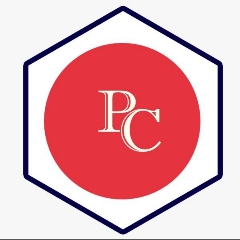Question 1 :
In van der Waals equation of state of the gas law, the constant {tex}'b'{/tex} is a measure of
Question 2 :
<div>Write 'true' or 'false' against the following statement. <br/></div><div>In a physical change no net energy change is involved.<br/></div><div> </div><br/>
Question 4 :
Which of the following sublimes without heating even at the room temperature?
Question 5 :
When an ideal gas undergoes unrestrained expansion no cooling occurs because the molecules-
Question 6 :
Which of the following graphs represents the correct Boyle's law? <br><img style='object-fit:contain' src='https://storage.googleapis.com/teachmint/question_assets/JEE%20Main/5e79858cd3f9ab617fcdb7eb' height='103' width='247' ><br><img style='object-fit:contain' src='https://storage.googleapis.com/teachmint/question_assets/JEE%20Main/5e79858cadb2ea6185a76658' height='101' width='246' >
Question 7 :
There is a standard value of temperature and pressure at which the molar volume of gas is <img style='object-fit:contain' src='https://storage.googleapis.com/teachmint/question_assets/JEE%20Main/5e79848ed3f9ab617fcdb600' height='21' width='48' >The correct values are
Question 9 :
<div>Write 'true' or 'false' against the following statement. <br/></div><div>In a chemical change, rearrangement of molecules and atoms involves some energy changes.<br/></div><div> </div><br/>
Question 10 :
Graphs between pressure and volume are plotted at different temperatures. Which of the following isotherms represents Boyle's law as PV = constant? <br><img style='object-fit:contain' src='https://storage.googleapis.com/teachmint/question_assets/JEE%20Main/5e798591c6cb6261b35b2e29' height='205' width='241' >
Question 11 :
The matter which has a fixed shape and volume with particles closely packed together with little movement is called ________________.
Question 12 :
The main reason for deviation of gases from ideal behavior is few assumptions of kinetic theory. These are<br>(i) There is no force of attraction between the molecules of a gas<br>(ii) volume of the molecules of a gas is negligibly small in comparison to the volume of the gas<br>(iii) particles of a gas are always in constant random motion.
Question 13 :
<div>Write 'true' or 'false' against the following statement . </div><div>Earthquake is a desirable change.<br/></div>
Question 14 :
At 300 K and under pressure of 100 atm the Z for O<sub>2</sub> is 0.96. At 600 K and under pressure of 150 atm the Z for O<sub>2</sub> is 0.8 for the same mass of O<sub>2</sub>. If the volume of O<sub>2</sub> at 300 K and 100 atm press is 2L, then what mass of O<sub>2</sub> (g) is required to fill a vessel of capacity 200 L at 600 K & 150 atm ?
Question 15 :
Large volumes of C.N.G is available in small cylinders due to its property of __________.
Question 17 :
As the temperature is raised from {tex} 20 ^ { \circ } \mathrm { C } {/tex} to {tex} 40 ^ { \circ } \mathrm { C } , {/tex} the average kinetic energy of neon atoms changes by a factor of which of the following?
Question 18 :
Assertion: The Joules-Thomson coefficient for an ideal gas is zero.
Reason: There is no intermolecular attractive forces in an ideal gas.
Question 20 :
The state of matter with the least intermolecular forces of attraction is :













































